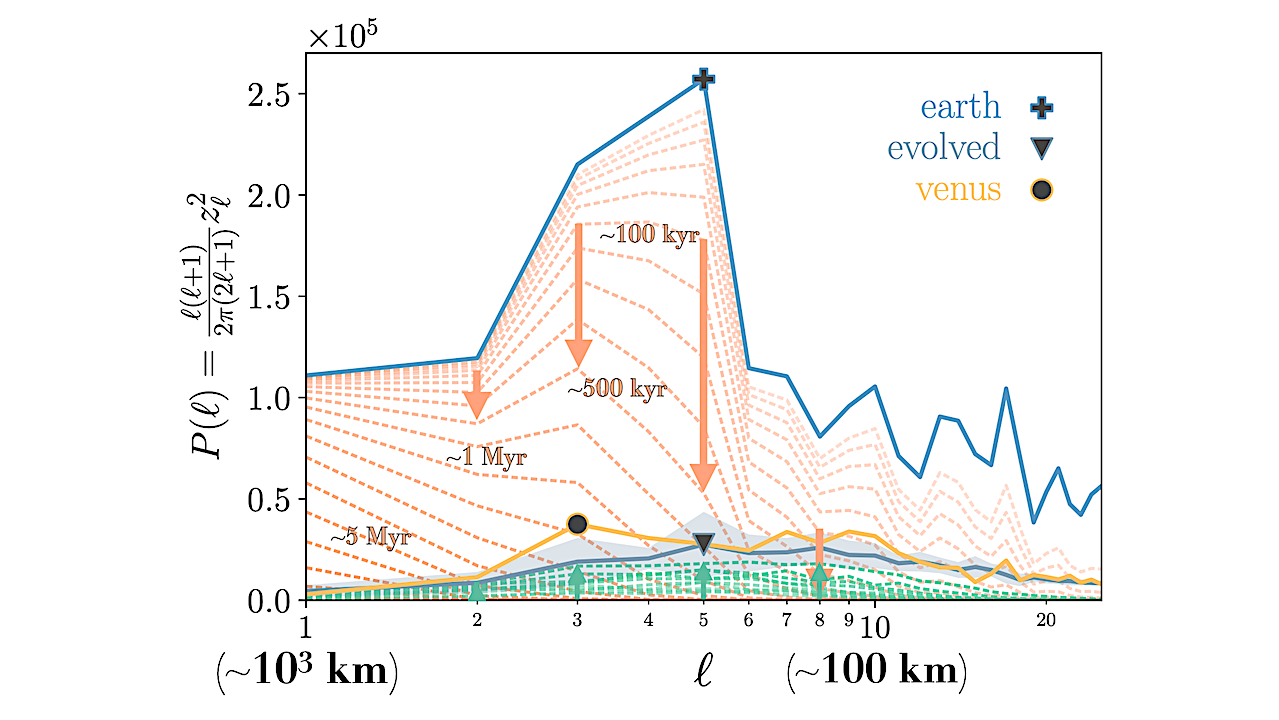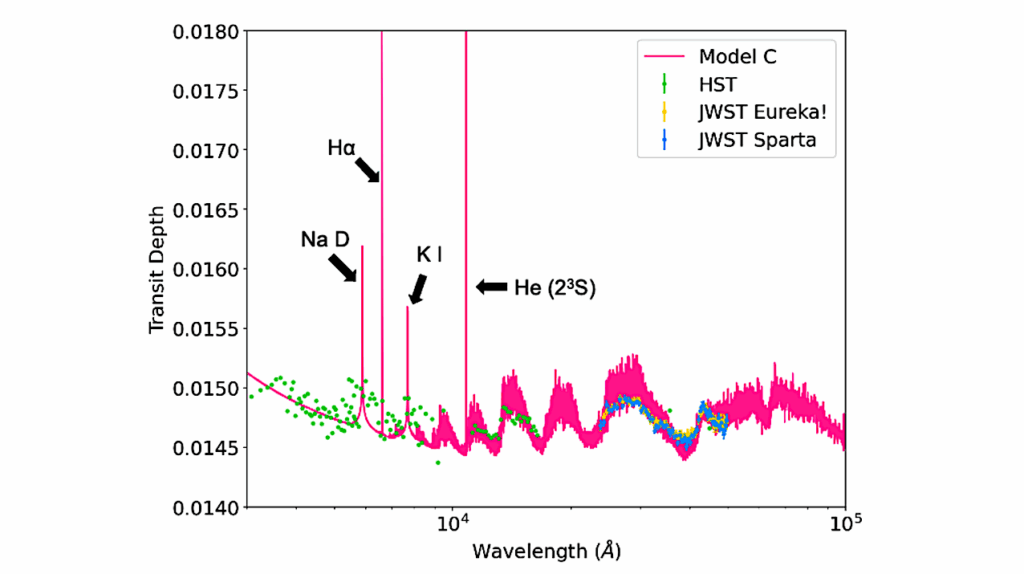Turning Earth Into Venus: A Stochastic Model of Possible Evolutions of Terrestrial Topography

Venus may have had both an Earth-like climate as well as extensive water oceans and active (or incipient) plate tectonics for an extended interval of its history. The topographical power spectrum of Venus provides important clues to the planet’s past evolution.
By drawing detailed contrast with the strong low-order odd-l dominated global topography of Earth, we demonstrate that the relatively flat Venusian topography can be interpreted to have arisen from the transition from active terrestrial-like plate tectonics to the current stagnant lid configuration at a time τ=544+886−193 million years before present.
This scenario is plausible if loss of oceans and the attendant transition to a CO2-dominated atmosphere were accompanied by rapid continental-scale erosion, followed by gradual lava resurfacing at an outflow rate ∼ 1 km3 yr−1.
We study Venus’ proposed topographical relaxation with a global diffusion-like model that adopts terrestrial erosion rates scaled to account for the increased rainfall and temperatures that would accompany a planet-wide transition from an Earth-like climate to the runaway greenhouse climate that could ultimately yield present-day Venus, with an estimate of 5.1+1.8−1.1 Myr if the global erosion operated as efficiently as that of a typical bedrock river basin on Earth.
Arthur D. Adams (1), Greg Laughlin (2) ((1) University of California, Riverside, (2) Yale University)
Comments: 17 pages, 4 figures, submitted to AAS Journals
Subjects: Earth and Planetary Astrophysics (astro-ph.EP)
Cite as: arXiv:2312.07483 [astro-ph.EP] (or arXiv:2312.07483v1 [astro-ph.EP] for this version)
Submission history
From: Arthur Adams
[v1] Tue, 12 Dec 2023 18:14:20 UTC (2,359 KB)
https://arxiv.org/abs/2312.07483
Astrobiology, Terraforming,








